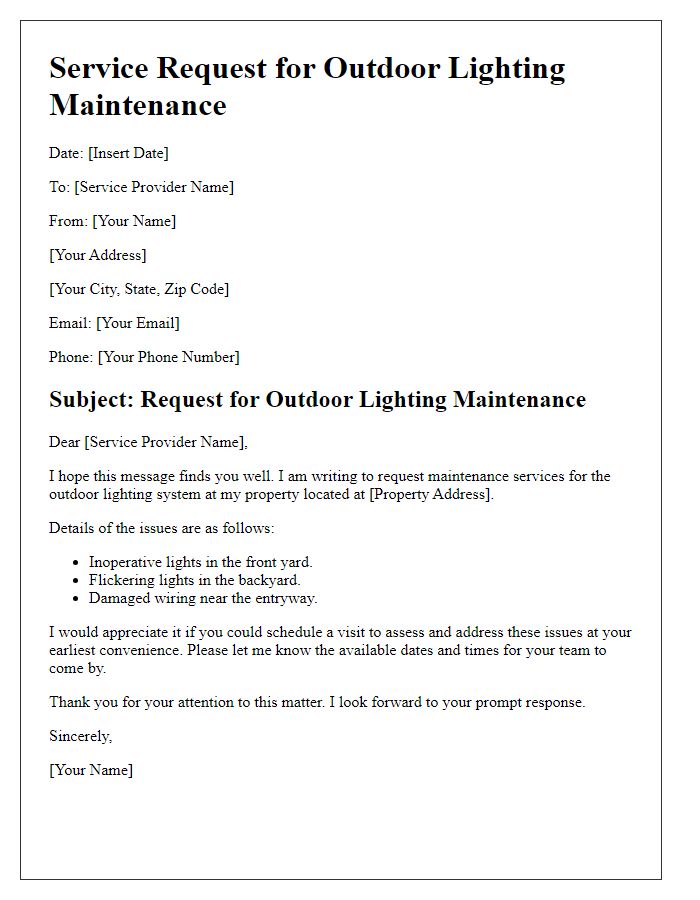Are you looking to enhance your outdoor space with the perfect lighting? Whether it's for your garden, patio, or pathway, selecting the right outdoor lighting is essential for both safety and ambiance. In this article, we'll explore key factors to consider when planning your outdoor lighting requirements, ensuring you create a stunning environment without compromising on functionality. So, let's dive in and illuminate your ideas to transform your outdoor areas!

Addressing Safety and Security.
Outdoor lighting plays a crucial role in enhancing safety and security in residential and commercial areas. Proper illumination of pathways, driveways, and entryways decreases the risk of accidents, as visibility increases for pedestrians and drivers alike. Motion-sensor lights, typically installed at strategic locations such as entrances and garages, provide immediate illumination when movement is detected, deterring potential intruders. Adequate lighting levels, approximately 10 to 20 foot-candles for high-security areas, make it more difficult for unauthorized individuals to approach unnoticed. Moreover, strategically placed solar or LED fixtures not only minimize energy consumption but also reduce the need for frequent maintenance. Incorporating lighting solutions with timers or smart technology enhances convenience and ensures consistent coverage throughout the night, contributing to a safer environment overall.
Energy Efficiency and Sustainability.
Outdoor lighting requirements prioritize energy efficiency and sustainability, essential for reducing carbon footprints in urban landscapes. LED (Light Emitting Diode) fixtures, with energy consumption reduced by up to 80% compared to traditional incandescent bulbs, offer long-lasting performance--averaging 25,000 to 50,000 hours. Solar-powered lights harness sunlight during the day, contributing to zero electricity costs while minimizing environmental impact. Smart lighting systems, which utilize motion sensors and timers, further enhance energy savings by ensuring lights operate only when needed. Consideration of local wildlife, such as migrating birds and nocturnal animals, encourages the use of warm color temperatures (2700K to 3000K) that reduce light pollution and promote ecological balance. Implementing dark sky-friendly designs, such as shielding and downlighting, minimizes skyglow and preserves the natural night environment. Lastly, integrating renewable energy sources, such as solar panels, can achieve self-sufficiency for outdoor lighting installations, aligning with sustainable development goals.
Aesthetic and Design Considerations.
Outdoor lighting plays a crucial role in enhancing the aesthetic appeal of residential and commercial spaces. Thoughtfully designed fixtures, such as pendant lights, wall sconces, and pathway lights, can create a warm atmosphere while providing functionality. Color temperature, measured in Kelvin, influences mood; warmer tones (around 2700K) evoke comfort, while cooler tones (above 4000K) enhance visibility. Placement of lighting determines focal points, accentuating landscaping elements like trees, water features, or architectural details. Energy-efficient options, such as LED bulbs, can reduce electricity costs significantly--up to 75% compared to traditional incandescent bulbs--while ensuring longevity and lower environmental impact. Furthermore, compliance with local outdoor lighting regulations, often outlined in zoning laws, can prevent light pollution and respect community aesthetics.
Compliance with Local Regulations.
Proper outdoor lighting design must adhere to local regulations, ensuring safety and illumination quality in public spaces. Guidelines often stipulate maximum permissible brightness levels, typically measured in lumens, to minimize light pollution and maintain community aesthetics. Municipal codes may require the use of specified fixtures, such as downlights or full cutoff lights, to direct light downward and prevent glare. Additionally, installation procedures must observe setback requirements, maintaining a defined distance from property lines, sidewalks, or roads. Regulatory bodies may mandate the use of energy-efficient lighting technologies, such as LED bulbs, which consume less energy and have longer lifespans. Compliance with these regulations not only enhances public safety by improving visibility after dark but also fosters environmentally sustainable practices within the community, reducing overall energy consumption and preserving the nighttime sky.
Light Pollution and Environmental Impact.
Light pollution poses significant challenges to outdoor lighting requirements, particularly in urban areas such as Los Angeles, California. Excessive artificial lighting disrupts nocturnal wildlife, affecting ecosystems and species behavior, especially in regions like the San Gabriel Mountains. For example, increased glare from streetlights can interfere with bird migration patterns and nocturnal predators like owls. The use of energy-efficient LED lighting can mitigate the environmental impact, as these fixtures reduce energy consumption up to 75% compared to traditional incandescent lights. Moreover, implementing shielding techniques can minimize skyglow, preserving the visibility of celestial bodies and enhancing community awareness of natural nightscapes, crucial for astronomical research at observatories like Griffith Park Observatory. Local ordinances and community guidelines are essential for establishing effective outdoor lighting that balances public safety and ecological preservation.













Comments